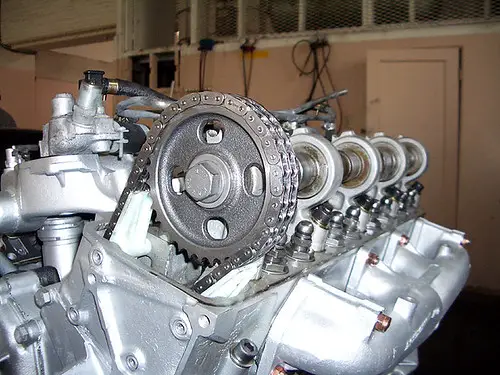If you’re a beginner or an automotive enthusiast, understanding the components that power your car is essential. One crucial aspect to grasp is whether your Toyota vehicle utilizes a Toyota timing belt or chain. Let’s delve into the world of Toyota timing belts and chains to help you decode their significance and maintenance requirements.
Sedan and Hatchback Models:
Toyota’s sedan and hatchback lineup offers a mix of timing belts and chains across various models. For example, the Avalon, a favorite among sedan lovers, transitioned from timing belts in earlier models to timing chains from 2005 onwards. Similarly, the Camry boasts a blend of timing belts and chains in its different iterations. The Corolla, a widely popular compact sedan, switched from belts to chains around 1998. Whether you’re driving a Corolla Hybrid or a Yaris Hatchback, you can be confident in the durability of timing chains.
Crossover Models:
Toyota’s crossover models, like the C-HR and RAV4, showcase the transition from belts to chains as well. The C-HR flaunts a modern timing chain, while the RAV4 shifted from belts in earlier versions to chains in 2001 and beyond. These changes reflect Toyota’s commitment to enhancing performance and longevity.
Minivan and MPV Models:
If you’re a minivan or MPV enthusiast, models like the Sienna and Previa boast timing belts and chains, showcasing the diverse range within Toyota’s lineup.
SUV and Trucks:
Toyota’s SUV and truck offerings feature a mix of timing belts and chains. The 4Runner, for instance, presents timing chains for its 4-cylinder models and timing belts for V6 versions. This diversity extends to other models like the Land Cruiser, Tacoma, Tundra, and more, each employing either belts or chains for optimal performance.
Coupes and Sports Car Models:
Even in the realm of coupes and sports cars, Toyota demonstrates its engineering prowess. The iconic Supra, for instance, shifted from timing belts in earlier models to chains in recent iterations, reflecting a commitment to cutting-edge technology.
Timing Belt vs. Timing Chain: The Basics:
Now that you’re familiar with the diverse applications of timing belts and chains in Toyota vehicles, it’s essential to understand the fundamental differences between the two systems. Timing belts, typically made of rubber, offer affordability and quieter operation due to reduced metal-to-metal contact. They require replacement every 60,000 miles or so and are lighter, contributing to improved performance and fuel efficiency.
In contrast, timing chains, constructed from metal, are more durable and less prone to slippage. With proper maintenance, they can last significantly longer, often reaching up to 150,000 to 200,000 miles before replacement is necessary.
Replacing Your Timing Belt or Chain: A Brief Guide:
For those keen on taking charge of their vehicle’s maintenance, replacing a timing belt or chain might seem daunting. Here’s a simplified guide to help you understand the process:
Timing Belt Replacement:
- Prepare your tools, including a new timing belt, screwdrivers, socket set, and more.
- Access the timing belt, set the timing, and remove the old belt.
- Install the new belt, reassemble the components, and test your vehicle.
Timing Chain Replacement:
- Gather your tools, including a new timing chain, socket and wrench set, and more.
- Access the timing chain, set the timing, and remove the old chain.
- Install the new chain, reassemble components, and ensure smooth operation.
Considering Costs and Maintenance:
When deciding between a timing belt and chain, factor in the replacement costs. While timing belts offer affordability upfront, their shorter lifespan might lead to frequent replacements. Timing chains, though more expensive initially, often last longer, potentially balancing out the expenses over time.
Regular maintenance is key to prolonging your Toyota’s lifespan. Consult your vehicle’s manual for specific replacement schedules based on factors like engine type and driving conditions. Staying proactive with replacements can prevent costly engine damage in the future.
Conclusion:
Understanding whether your Toyota vehicle uses a timing belt or chain empowers you to make informed decisions about maintenance and replacements. The intricate interplay of belts and chains within these automotive marvels reflects Toyota’s commitment to performance and reliability. Whether you’re cruising in a sedan, a crossover, an SUV, or a sports car, knowing the heart of your vehicle enhances your driving experience.


